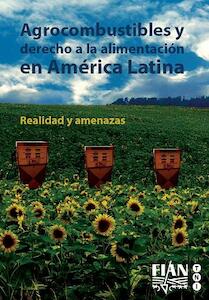Las declaraciones hechas ayer por dirigentes de algunas entidades empresariales en Puerto Rico, y en las cuales hacían alusión a varios proyectos residenciales-turísticos propuestos en varios lugares de la zona costanera de Puerto Rico, según fueron reseñadas en diferentes medios de prensa, faltan a la verdad.
Según las expresiones hechas por la Asociación de Constructores de Hogares, la Asociación de Hoteles y Turismo, la Asociación de Industriales, la Asociación de Contratistas Generales y la Cámara de Comercio de Puerto Rico, entre otras entidades, los proyectos propuestos San Miguel Four Seasons Resort en Luquillo, Dos Mares J.W. Marriott Resort en Fajardo, Costa Serena en Piñones, la expansión del Courtyard Marriott en el Balneario de Isla Verde, y WindMar en Guayanilla, cumplen con las leyes aplicables y han logrado sus permisos. Añaden, que a pesar de esto, han sido obstaculizados, detenidos o revocados por protestas sin fundamento científico o legal hechas por grupos minoritarios, mediante presiones públicas indebidas.
Ninguno de estos proyectos ha obtenido permiso alguno para su construcción.
1. El proyecto WindMar se encuentra todavía bajo evaluación de las agencias gubernamentales. 2. Tanto las declaraciones de impacto ambiental de Costa Serena y del Dos Mares Resort fueron rechazadas por los tribunales en Puerto Rico, porque no cumplían con los requisitos legales mínimos establecidos para evaluar su impacto ambiental, por lo que ninguna agencia ha podido otorgar permiso alguno en el pasado, según ordena la Ley de Política Pública Ambiental de Puerto Rico. A su vez, ignoran el hecho que estos proyectos han sido rechazados inclusive por agencias federales especializadas como el US Forest Service, el US Fish and Wildlife Service, entre otras organizaciones profesionales.
3. La Declaración de Impacto Ambiental del San Miguel Resort ha sido rechazada en tres ocasiones consecutivas, durante diferentes administraciones gubernamentales, por la Junta de Calidad Ambiental, por esta contener deficiencias crasas. Una de estas deficiencias hacía mención a que el Océano Pacífico se encuentra al norte de Puerto Rico. Este proyecto también ha sido objetado por agencias federales, entidades profesionales y organizaciones conservacionistas internacionales.
4. Con el Courtyard Marriott, el Tribunal de Primera Instancia dictaminó que el contrato de arrendamiento de los terrenos donde se proponía este proyecto era ilegal, puesto que ello equivaldría a la privatización y enajenación de bienes de dominio público como son nuestras playas.
5. En el caso de la CEMEX , el Tribunal de Apelaciones revocó el permiso otorgado por la Junta de Calidad Ambiental para la quema de neumáticos dado a que no se llevaron a cabo los procedimientos de evaluación requeridos legalmente sobre su impacto al ambiente, y con ello, a la salud pública. Cabe destacar que la EPA declaró las facilidades de esta compañía en Ponce como 'Violadora de Alta Prioridad' tan recientemente como hace dos semanas. Esta categoría constituye el señalamiento o nivel más serio sobre violaciones ambientales entre las industrias reguladas por EPA en los Estados Unidos bajo la Ley federal de Aire Limpio.
Es conocimiento básico que toda determinación judicial en nuestro sistema legal debe estar amparada estrictamente en criterios legales. Indicar, por lo tanto, que la decisión tomada en los casos antes señalados se debió a presiones de grupos, sin fundamentos legales o científicos, constituye una falta de respeto a nuestro sistema judicial y a todos los funcionarios públicos que forman parte del mismo. Estas declaraciones persiguen ignorar la realidad: estos proyectos no han podido ser construidos por que nunca han cumplido con las leyes que rigen el desarrollo sostenible de los suelos, la conservación y aprovechamiento de nuestros recursos naturales y la protección del medio ambiente. Como consecuencia, resultan contrarios al interés público y por ende, al beneficio general de la comunidad.
Exhortamos a las entidades empresariales responsables por estas declaraciones a que reflexionen profundamente sobre las mismas. De lo contrario, se entendería que apoyan y endosan la ilegalidad, conducta que debe ser entonces repudiada por todos los sectores de nuestra sociedad.
A la luz de los hechos, y como representantes de importantes sectores económicos en la Isla , entendemos que están en la obligación de rectificar y hacer las aclaraciones correspondientes. De no hacerse así, es forzado concluir que dichas declaraciones forman parte de una campaña de desinformación y engaño a la ciudadanía.
El desarrollo de nuestra Isla no puede ni debe basarse en el incumplimiento de las leyes, como una manifestación más de la corrupción moral, ya que ello es la base de los grandes problemas sociales y económicos, incluyendo la desigualdad, que estamos sufriendo al presente todos los puertorriqueños y demás residentes de la Isla.
Etiquetas: Puerto Rico





















